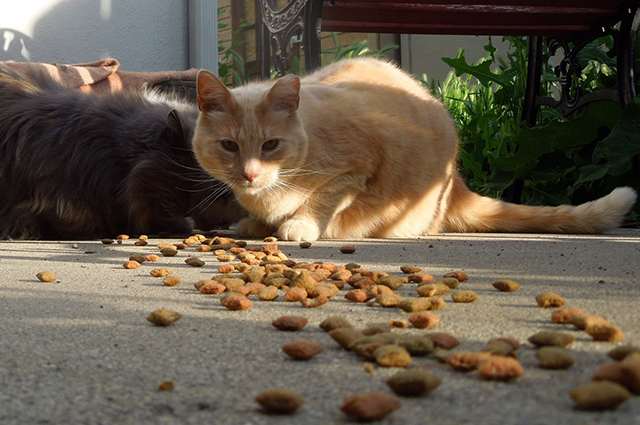Newly Published Bioeconomic Model Yields Strategies to Better Manage Free-roaming Cat Populations

Portland, Oregon (January 25, 2022): Animal lovers who care about both cats and wildlife are offered a solution in a new study published open-access in the Journal of Feline Medicine and Surgery.
Experts in population modeling, economics, wildlife conservation, and animal welfare collaborated on the bioeconomic research, which shows the projected cumulative costs, plus long-term decreases in free-roaming cat (FRC) populations, associated with different management interventions.
“The work helps answer crucial questions for the animal welfare community, policymakers, and conservationists,” says co-lead author Valerie Benka, Director of Programs for the Alliance for Contraception in Cats & Dogs, which facilitated the research. “It gives insight into what must be done to see lasting change in cat populations, as well as the related cumulative costs for organizations.”
The model simulations show that Trap-Neuter-Return (TNR) can work extremely well, but the best outcomes and economic efficiency require that sterilizations be “frontloaded” and performed intensively early in the intervention. Authors defined that as quickly sterilizing 75% of intact cats, and continuing to sterilize that proportion of remaining (or new) intact cats over time—something that will yield a high percentage of sterilized cats in the community with many fewer sterilization surgeries needed in the
maintenance phase. Gradual TNR interventions can be costly without yielding significant reductions in population numbers long-term. They also aren’t as effective at reducing numbers of “preventable” cat and kitten deaths relative to doing intensive work up front.
The model shows that removal of cats successfully reduces populations over time. Removal for adoption is highly effective, but very costly. For results to be significant and cost-effective, cats must undergo lethal removal at a scale not widely practiced because of the constant and intensive killing required, and the desire of communities for more humane alternatives. The model shows that the more sporadic removal typically seen in communities is both costly and minimally effective.
“One big take-away from this research is that TNR works—and works well!—but it must be done strategically and intensively at the start for positive long-term results,” explains Margaret Slater, Vice President of Research at the ASPCA®, and co-author of the study. “The results are a call to action for TNR advocates, animal welfare organizations, and grantmakers to reflect on how they implement and fund TNR.”
And no matter the intervention, abandonment and immigration of new cats can quickly undermine progress, speaking to the importance of identifying sources of new FRCs, supporting vulnerable owners and pets, and focusing on access to veterinary care in underserved populations.
“This paper comes at an important time and aligns well with research from the DC Cat Count,” explains wildlife biologist Dr. John Boone, who participated in both initiatives. “The DC Cat Count brings valuable new ways to calculate numbers of cats in communities. This modeling work shows us what to do to manage them.”
The complete article can be read at no cost here. For those seeking practical take-aways from the modeling without all the technical background, the study authors created this user-friendly guidance document. It covers key findings from our research, and the recommendations and guidelines that result. More information on the research can also be found on ACC&D’s website.
About the study collaborators: This study is the product of an unprecedented joint effort by experts in cat welfare, wildlife conservation and veterinary medicine. Contributors come from the Alliance for Contraception in Cats & Dogs (ACC&D); American Society for the Prevention of Cruelty to Animals (ASPCA); Conservation Planning Specialist Group (CPSG); Cummings School of Veterinary Medicine at Tufts University; Great Basin Bird Observatory; Hunter College Program in Animal Behavior and Conservation; United States Department of Agriculture – National Wildlife Research Center (USDANWRC); and University of Florida College of Veterinary Medicine. ACC&D coordinated this study; the work was made possible by grants from the ASPCA, Merial (now Boehringer Ingelheim), and Kenneth A. Scott Charitable Trust.
ACC&D is a nonprofit organization whose mission is to advance non-surgical sterilants and contraceptives for cats and dogs and to promote their global accessibility. For more information visit www.acc-d.org.
